It looks like you're using an Ad Blocker.
Please white-list or disable AboveTopSecret.com in your ad-blocking tool.
Thank you.
Some features of ATS will be disabled while you continue to use an ad-blocker.
29
share:
This is only a small piece of the big picture. I welcome anybody to add to the story..
----
- Quotes from Buckminster Fuller, Critical Path
----
How did the power structures of today come to be? Where did they come from? They have a long history spanning thousands of years.
Through the study of the development of language and the symbolism they employed, we can shed light on many aspects of their development.
In his book Critical Path, Buckminster Fuller told of the early Canaanite-Phoenician civilization that amassed great wealth from world-around trading, with the development of advanced ship building design and navigational science.
The Phoenician - Canaanite civilization
Their civilization can be traced back as early as 3200 BC.
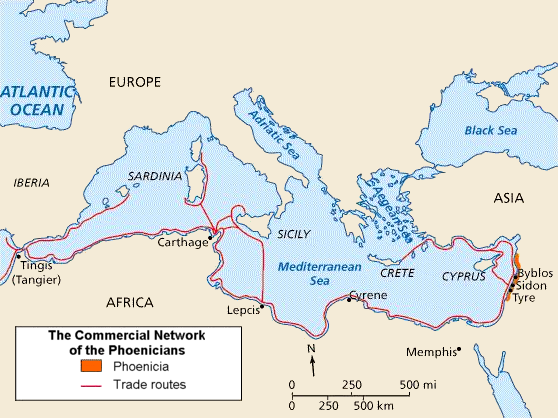
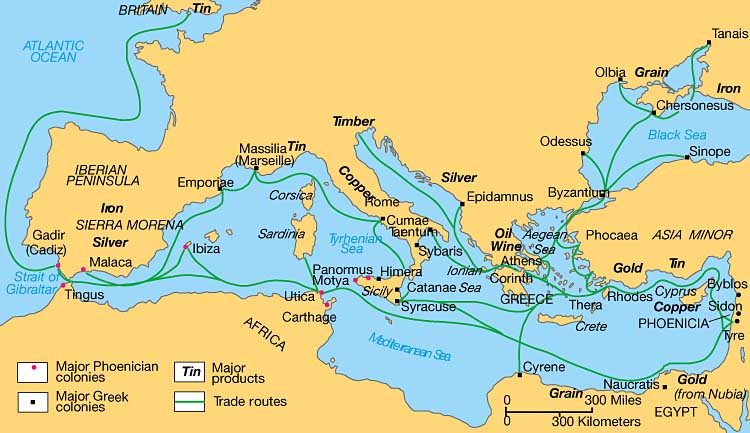
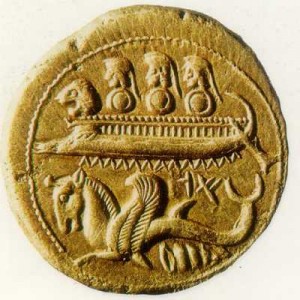 Ancient Phoenician coin depicting their ship
Ancient Phoenician coin depicting their ship
 Assyrian warship, 700BC
Assyrian warship, 700BC
Canaan is the region on the east coast of the Mediterranean in the Levant, where Palestine/Israel, Lebanon and Syria is today.
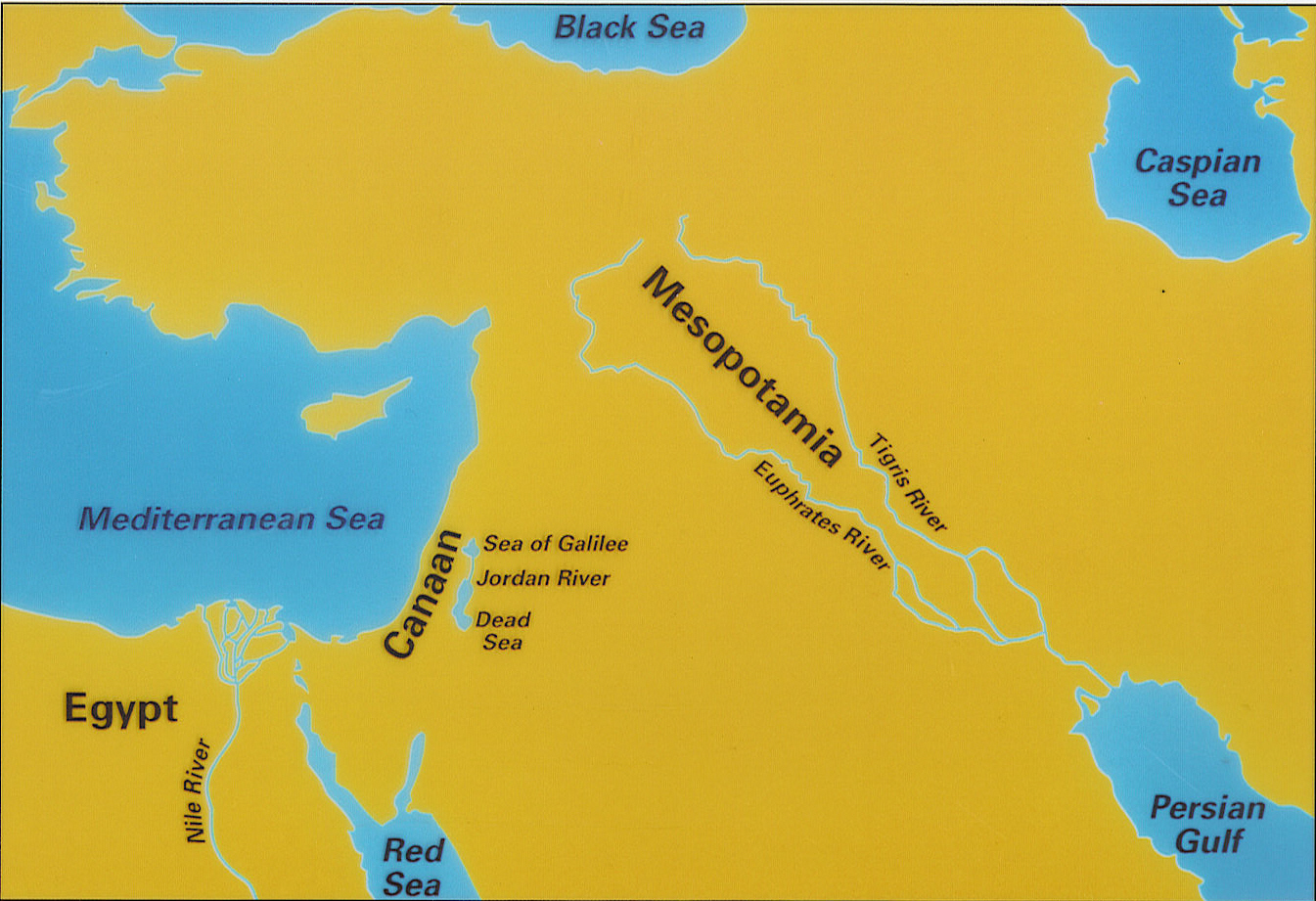
----
Phoenicia/Canaan grew out of the earlier and contemporary Fertile Crescent civilizations - The Sumerian, The Akkadian, and Assyrian Empires.
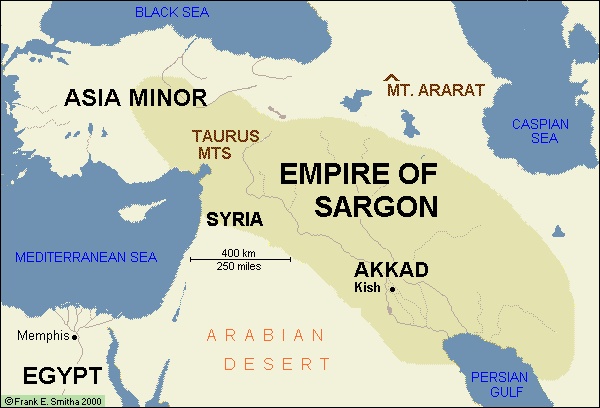 Akkadian Empire under Sargon apx 2279 BC
Akkadian Empire under Sargon apx 2279 BC
----
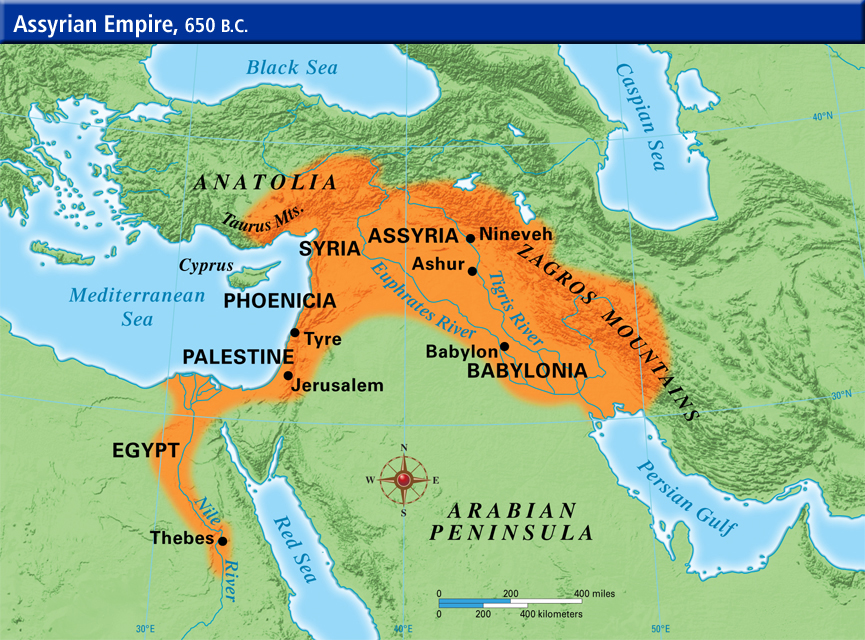 Assyrian Empire 650 BC
Assyrian Empire 650 BC
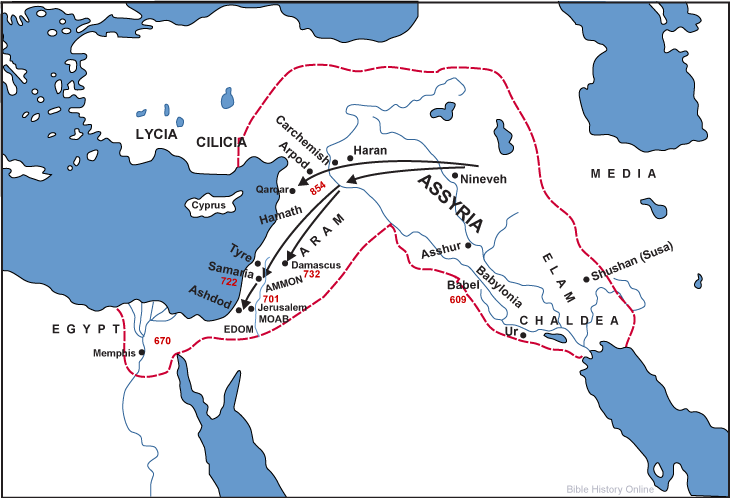 Map of Assyrian expansion
Map of Assyrian expansion
----
Armana letters
Evidenced by the Armana letters (written somewhere around 1391 BC - 1332 BC), there was correspondence, relations, and intermarriage amongst the various Fertile Valley civilizations (i.e. the Egyptians, Canaanites/Phoenicians, Babylonians, Assyrians, etc.)
While the Fertile Crescent civilizations were split up into different names and jurisdictions throughout the eras, the cultures shared a lot in common, and in a sense can be seen as a whole, especially (supposedly) being united at one time under a single empire.
The entire fertile crescent region is not that large comprising in land mass a portion of the united states.
 Middle East compared to the United States at the same exact scale
Middle East compared to the United States at the same exact scale
----
The most important initial instinct of the most powerful individual or of his organized power structure is,
"Divide to conquer, and to keep conquered, keep divided."
"Great battles ensued—waged under the flags of England, France, and Spain—to determine who would become supreme master of the world's high-seas line of supply. These great nations were simply the operating fronts of behind-the-scenes, vastly ambitious individuals who had become so effectively powerful because of their ability to remain invisible while operating behind the national scenery. Always their victories were in the name of some powerful sovereign-ruled country. The real power structures were always the invisible ones behind the visible sovereign powers."
"world-power-stature individuals who vied for supreme mastery of the world's high seas lines of supply also operated invisibly through monarchs and nations over whom they had sufficient influence. Through such behind-the-throne influence the influenced nation's resources could be politically maneuvered into paying for the building and operation of the navies and armies that would seek to establish and protect their respective privately owned enterprises."
- Quotes from Buckminster Fuller, Critical Path
----
How did the power structures of today come to be? Where did they come from? They have a long history spanning thousands of years.
Through the study of the development of language and the symbolism they employed, we can shed light on many aspects of their development.
In his book Critical Path, Buckminster Fuller told of the early Canaanite-Phoenician civilization that amassed great wealth from world-around trading, with the development of advanced ship building design and navigational science.
The Phoenician - Canaanite civilization
Their civilization can be traced back as early as 3200 BC.




www.phoenician.org...
"Nor were these boats tiny. The galley fighting ships, with their rows of galley oars, could have a crew of over a hundred people ... But even those were small compared to the Phoenician cargo ships with their vast, rounded hulls. These ocean-going ships were built for huge loads and long hauls."
The Levant region was inhabited by people who themselves referred to the land as 'ca-na-na-um' as early as the mid-third millennium BCE.
- en.wikipedia.org...
while "Phoenician" and "Canaanite" refer to the same culture, archaeologists and historians commonly refer to the Bronze Age, pre-1200 BC Levantines as Canaanites and their Iron Age descendants, particularly those living on the coast, as Phoenicians.
en.wikipedia.org...
Phoenicia is really a Classical Greek term used to refer to the region of the major Canaanite port towns, and does not correspond exactly to a cultural identity that would have been recognized by the Phoenicians themselves. .. However, in terms of archaeology, language, life style and religion, there is little to set the Phoenicians apart as markedly different from other Semitic cultures of Canaan. As Canaanites, they were unique in their remarkable seafaring achievements.
Canaan is the region on the east coast of the Mediterranean in the Levant, where Palestine/Israel, Lebanon and Syria is today.

----
Phoenicia/Canaan grew out of the earlier and contemporary Fertile Crescent civilizations - The Sumerian, The Akkadian, and Assyrian Empires.
Akkad is sometimes regarded as the first empire in history, though there are earlier Sumerian claimants..

During the 3rd millennium BC, there developed a very intimate cultural symbiosis between the Sumerians and the Semitic Akkadians, which included widespread bilingualism. Akkadian gradually replaced Sumerian as a spoken language somewhere between the 3rd and the 2nd millennia BC..
----
- Akkadian_Empire
"After the fall of the Akkadian Empire, the Akkadian people of Mesopotamia eventually coalesced into two major Akkadian speaking nations: Assyria in the north, and, a few centuries later, Babylonia in the south."
- Assyria
At its peak, the Assyrian empire stretched from Cyprus in the Mediterranean Sea to Persia (Iran), and from what is now Armenia to the Arabian Peninsula and Egypt.


----
Armana letters
Evidenced by the Armana letters (written somewhere around 1391 BC - 1332 BC), there was correspondence, relations, and intermarriage amongst the various Fertile Valley civilizations (i.e. the Egyptians, Canaanites/Phoenicians, Babylonians, Assyrians, etc.)
- en.wikipedia.org...
The Amarna letters .. shed light on the culture and language of the Canaanite peoples in pre-biblical times. The letters, though written in Akkadian, are heavily colored by the mother tongue of their writers, who spoke an early form of Canaanite, the language family which would later evolve into its daughter languages, Hebrew and Phoenician.
- www.reshafim.org.il...
( Armana letters) reflect the lively correspondence between the Egyptian administration and its representatives in Canaan .. and the state of international affairs between Egypt and the major powers of the Middle East, Babylonia, .. and Assyria..
While the Fertile Crescent civilizations were split up into different names and jurisdictions throughout the eras, the cultures shared a lot in common, and in a sense can be seen as a whole, especially (supposedly) being united at one time under a single empire.
The entire fertile crescent region is not that large comprising in land mass a portion of the united states.

edit on 19-9-2015 by nOraKat because: (no reason given)
(The Phoenician - Canaanite civilization, continued..)
The Phoenicians established settlements and ports all throughout the Mediterranean and beyond, into parts of present day N. Africa (Carthage), Greece (Cyprus, Crete), Italy (Venice), S. France, Portugal and Spain as early as 1200 BC or earlier, spreading their culture and likely breeding with the local people.
With earlier settlements and headquarters in Canaan such as Byblos, Sidon and Tyre, and Mediterranean Islands such as Cyprus and Crete (the Minoans), their headquarters shifted throughout different eras, further west, to such places as Carthage in N. Africa/Tunisia and Venice, in present day Italy.
List of Phoenician cities.
In the Bronze age, they mined tin from the British Isles to make bronze, and transported massive amounts of silver from mines in southern Spain to supply as money/coinage to the Middle East amassing great wealth.
So already, in ancient times as far back as 1200-1500 BC, they are traveling to, interacting, and cross-breeding with people in present day Europe and the British Isles. Being the earliest of civilizations to travel in the region, you can imagine the cultural and genetic impact they had on the entire region.
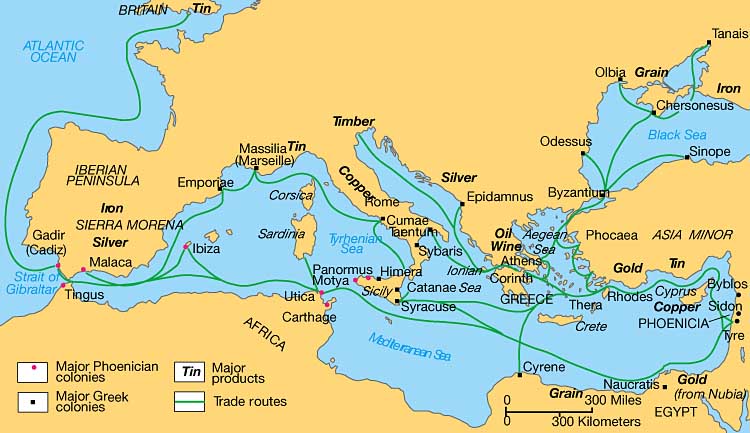
----
The Development of Money
Buckminster Fuller writes on the development of money by the Phoenicians:
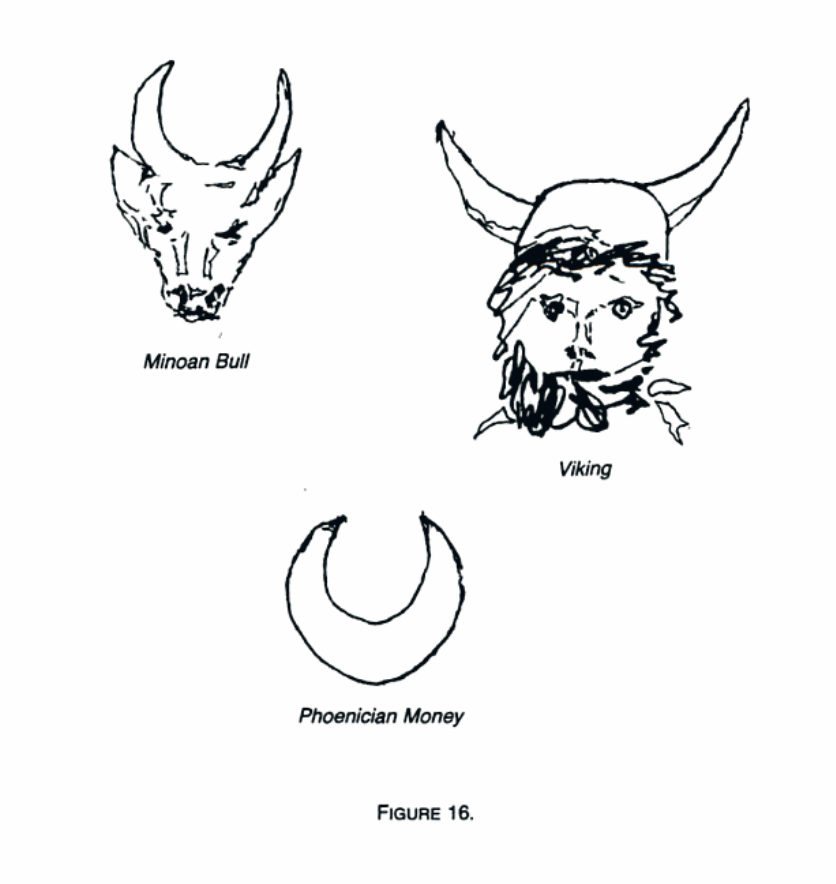
The Bulls horns are reminiscent of the bulls horns on this Akkadian helmet.
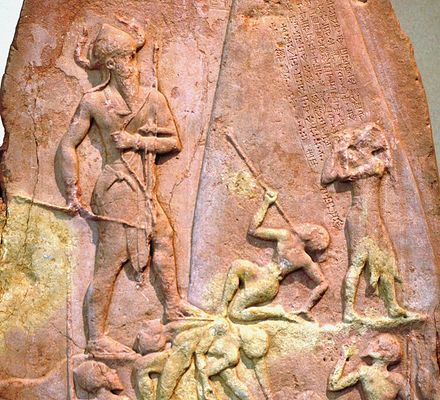 Stele Naram Sim of Akkad, Louvre Museum
Stele Naram Sim of Akkad, Louvre Museum
 Minoan, Crete
Minoan, Crete
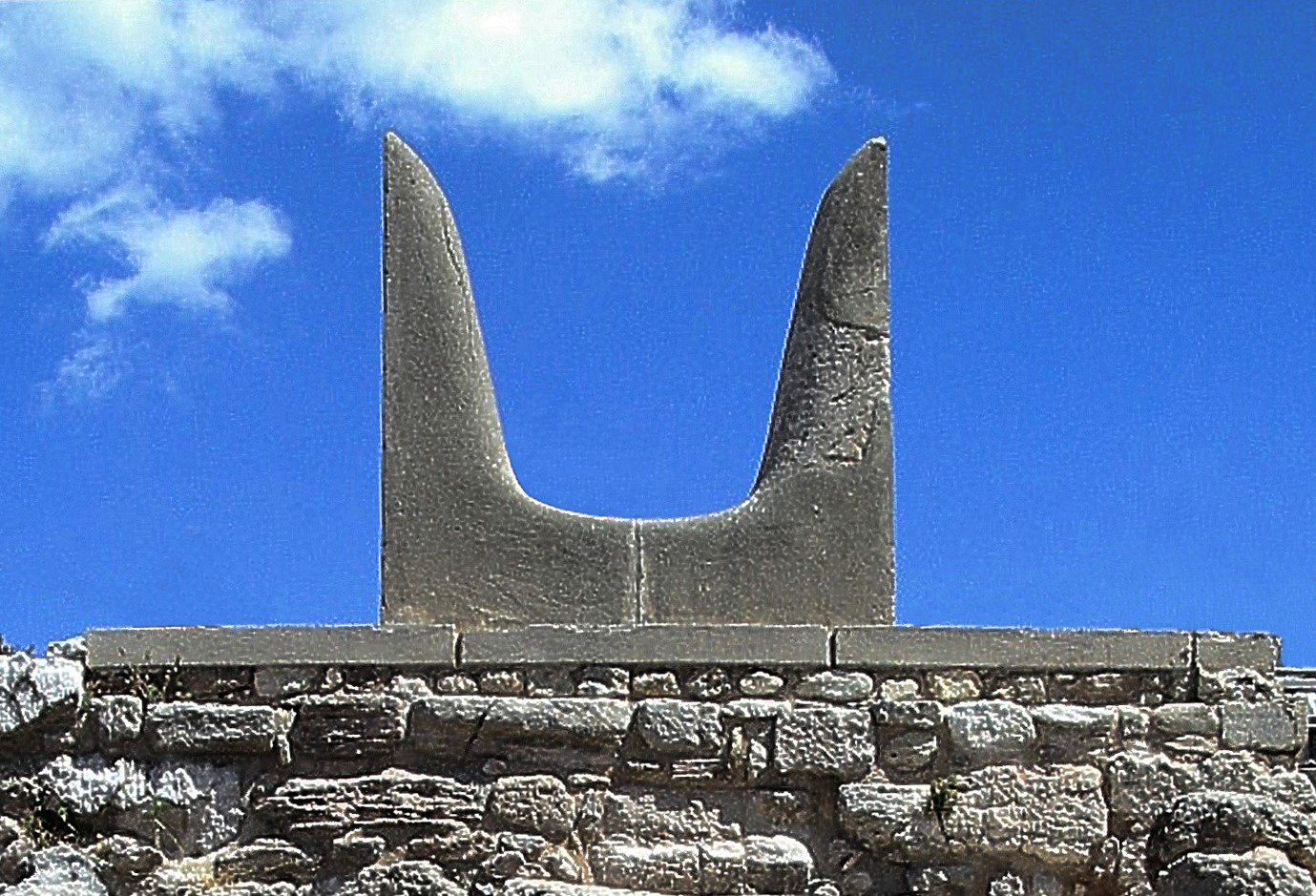 Horns of Consecration, Knossos, Crete
Horns of Consecration, Knossos, Crete
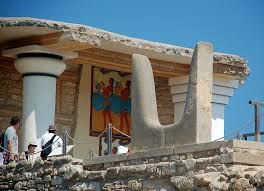 Knossos, Crete
Knossos, Crete
 Illustration of siege of Tyre, 350 BC, by André Castaigne, depicting a Bull idol
Illustration of siege of Tyre, 350 BC, by André Castaigne, depicting a Bull idol
----
- Buckminster Fuller, Critical Path
----
 Ancient Phoenician coin with owl
Ancient Phoenician coin with owl
----
On the development of Language
All written language of the 'western world' developed from Phoenician. If there is one thing that attests to the fact that there is a common cultural origin shared amongst Western/European nations, it is sharing the origins of their language. While it does not prove a pure genetic lineage, it suggests a direct cultural lineage from 'nation' to 'nation' with intimate interaction, if not in fact, cross-breeding also.
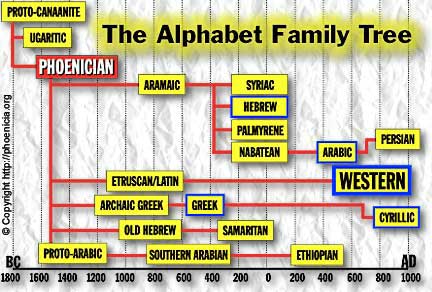
Hebrew is the closest living language of the Phoenicians. Note that the entire Western language descended from the 'Semitic' Phoenician, through Etruscan and Latin.
- Herodotus' account (written c. 440 BC)
According to the Persians best informed in history, the Phoenicians began the quarrel. These people, .. having migrated to the Mediterranean and settled in the parts which they now inhabit, began at once, they say, to adventure on long voyages, freighting their vessels with the wares of Egypt and Assyria ...
The Phoenicians established settlements and ports all throughout the Mediterranean and beyond, into parts of present day N. Africa (Carthage), Greece (Cyprus, Crete), Italy (Venice), S. France, Portugal and Spain as early as 1200 BC or earlier, spreading their culture and likely breeding with the local people.
With earlier settlements and headquarters in Canaan such as Byblos, Sidon and Tyre, and Mediterranean Islands such as Cyprus and Crete (the Minoans), their headquarters shifted throughout different eras, further west, to such places as Carthage in N. Africa/Tunisia and Venice, in present day Italy.
List of Phoenician cities.
In the Bronze age, they mined tin from the British Isles to make bronze, and transported massive amounts of silver from mines in southern Spain to supply as money/coinage to the Middle East amassing great wealth.
- www.pharology.eu...
The Phoenician ships were loaded with silver until they could carry no more, but it is said they got around this and carried yet more by casting even the anchors in silver. The result in the wider Mediterranean was a devaluation of the currency, but this mattered little to the Phoenicians who had access to as much wealth as they needed.
So already, in ancient times as far back as 1200-1500 BC, they are traveling to, interacting, and cross-breeding with people in present day Europe and the British Isles. Being the earliest of civilizations to travel in the region, you can imagine the cultural and genetic impact they had on the entire region.

----
The Development of Money
Buckminster Fuller writes on the development of money by the Phoenicians:
"Up until 1500 B.C. all money was cattle, lambs, goats, or pigs - live money
that was real life-support wealth, wealth you could actually eat. Steers were
by far the biggest food animal, and so they were the highest denomination
of money. The Phoenicians carried their cattle with them for trading, but
these big creatures proved to be very cumbersome on long voyages. This was
the time when Crete was the headquarters of the big-boat people.. Crete was called the Minoan civilization, the bull civilization,.."
"Graduating from carrying cattle along for trading in 1500 B.C. the Phoenicians invented metal money, which they first formed into iron half-rings that looked like a pair of bull's horns."

The Bulls horns are reminiscent of the bulls horns on this Akkadian helmet.





----
"If metal was being used for trading, then there were other kinds of metal they preferred trading with people - silver, copper, and gold were easy to judge by hefting and were more aesthetically pleasing than the forged iron bull horn symbols.
This soon brought metal coinage into the game of world trading, with the
first coin bearing the image of the sovereign of the homeland of the Phoenicians."
"The merchant bankers of Venice came to underwrite the Venetians' (the
Phoenicians') voyaging ventures. Such international trade financing swiftly
became the big thing in the banking game."
"It was the financing of such international voyaging, trading, and individual
travel as well as of vaster games of governmental takeovers that built
the enormous wealth-controlling fortunes of early European private banking
families."
- Buckminster Fuller, Critical Path
----

----
On the development of Language
- Buckminster Fuller, Critical Path
This was the time when the Phoenicians began trading with people of so many different languages that, in need of a means of recording the different word sounds made by people around the world, the Phoenicians invented phonetic spelling—Phoenician spelling—which pronounced each successive sound separately and invented letter symbols for each sound. With phonetic spelling human written communication changed very much—from the visual metaphor - concept writing of the Orient, accomplished with complex idea-graphics (ideographs), several of which frequently experienced, generalized cartoons told the whole story visually. It was a big change from ideographs to the Phoenicians' phonetic spelling, wherein each letter is a single sound - having no meaning in itself - and whereby it took several sounds to make a whole word and many such words to make any sense—i.e., a sentence.
This is the historical event that Ezra Pound says coincides with the story of the Tower of Babel. Pound says that humanity was split into a babble of individually meaningless sounds while losing the conceptual symbols of whole ideas—powerful generalizations. You had to become an expert to understand the phonetic letter code. The spelling of words excluded a great many people from communicating, people who had been doing so successfully with ideographs.
All written language of the 'western world' developed from Phoenician. If there is one thing that attests to the fact that there is a common cultural origin shared amongst Western/European nations, it is sharing the origins of their language. While it does not prove a pure genetic lineage, it suggests a direct cultural lineage from 'nation' to 'nation' with intimate interaction, if not in fact, cross-breeding also.

Hebrew is the closest living language of the Phoenicians. Note that the entire Western language descended from the 'Semitic' Phoenician, through Etruscan and Latin.
The Phoenician alphabetic script of 22 letters was used at Byblos as early as 1500 B.C. This method of writing, later adopted by the Greeks, is the ancestor of the modern Roman alphabet.
- phoenicia.org...
All the European alphabets are descendants of the Phoenician, and all the Asiatic alphabets are descendants of the Aramaic variants of the Phoenician. The Phoenician alphabet is a forerunner of the Etruscan, Latin, Greek, Arabic, Hebrew, and Syriac scripts among others, many of which are still in modern use.
(On the development of Language, cont..)
"The Phoenicians were the first state-level society to make extensive use of the alphabet. The Phoenician alphabet is the oldest verified consonantal alphabet, or abjad. .. The Phoenician phonetic alphabet is generally believed to be the ancestor of almost all modern alphabets". - en.wikipedia.org...
"Phoenician is a Semitic language of the Canaanite subgroup; its closest living relative is its sister language Hebrew, to which it is very similar." - en.wikipedia.org...
Table of the Phoenician Alphabet and Modern Equivalents (Latin)
"Through their maritime trade, the Phoenicians spread the use of the alphabet to North Africa and Europe, where it was adopted by the Greeks, who later passed it on to the Etruscans, who in turn transmitted it to the Romans." - en.wikipedia.org...
If you look at the chart above, you will observe the development of written language from Phoenician, to Etruscan, to Roman/Latin. Suspecting a cultural connection between those cultures, let's look into them.
--------------------------
From Phoenicians to Veekings/Vikings, and their westward expansion to headquarters in Venice, Italy
 (Phoenician boat (left), Norman boat (right))
(Phoenician boat (left), Norman boat (right))
 Ancient Phoenician coin with boat
Ancient Phoenician coin with boat
Notice the helmets worn on this ancient Phoenician coin are reminiscent of Etruscan (and later Roman) helmets below:
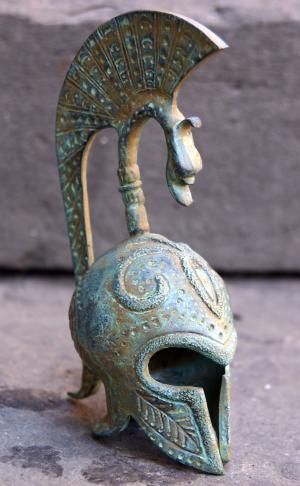 Etruscan helmet
Etruscan helmet
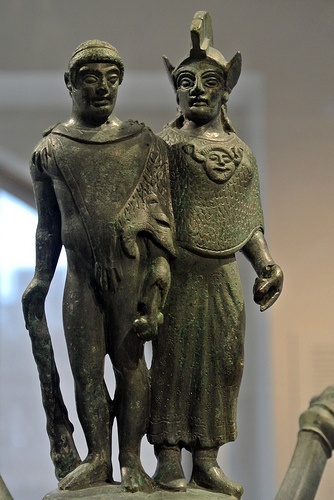 Etruscan
Etruscan
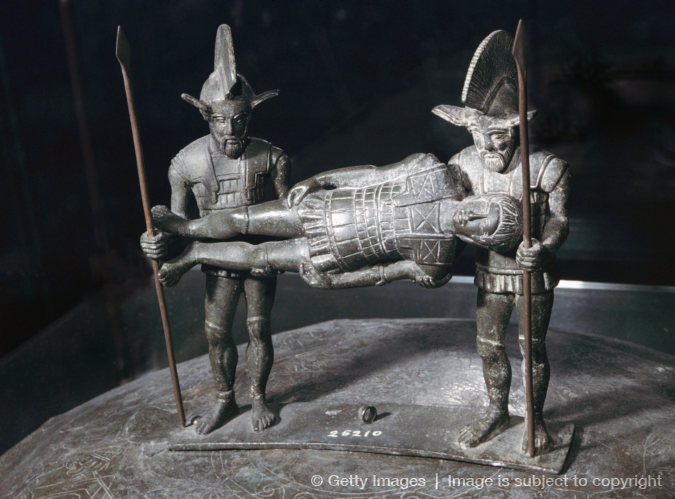 Etruscan
Etruscan
----
The Etruscans
Military Tradition of the Etruscans
- en.wikipedia.org...
Ties between the Etruscans and Phoenicians go far back.
"The Phoenicians were the first state-level society to make extensive use of the alphabet. The Phoenician alphabet is the oldest verified consonantal alphabet, or abjad. .. The Phoenician phonetic alphabet is generally believed to be the ancestor of almost all modern alphabets". - en.wikipedia.org...
"Phoenician is a Semitic language of the Canaanite subgroup; its closest living relative is its sister language Hebrew, to which it is very similar." - en.wikipedia.org...
Table of the Phoenician Alphabet and Modern Equivalents (Latin)
"Through their maritime trade, the Phoenicians spread the use of the alphabet to North Africa and Europe, where it was adopted by the Greeks, who later passed it on to the Etruscans, who in turn transmitted it to the Romans." - en.wikipedia.org...
If you look at the chart above, you will observe the development of written language from Phoenician, to Etruscan, to Roman/Latin. Suspecting a cultural connection between those cultures, let's look into them.
--------------------------
From Phoenicians to Veekings/Vikings, and their westward expansion to headquarters in Venice, Italy
The Phoenicians, Cretans, and the Mycenaeans, together, in fleets of
these big-ribbed and heavily planked ships, went to Troy and besieged it.
.. the Troy-besieging Greeks and Cretans came to Troy in ships ..
At this point in the history of swiftly evolving, multibanked, oar- and sail-driven fighting ships, the world power-structure control shifts westward to Italy. While historians place prime emphasis on the Roman legions as establishing the power of the Roman Empire, it was in fact the development of ships and the overseas line of supply upon which its power was built—by transporting those legions and keeping them supplied.
..in Italy—in the northeastern corner—is Venice,
the headquarters of the water-people. The Phoenicians—phonetically
the Venetians—had their south Mediterranean headquarters in Carthage in
northern Africa. In their western Mediterranean and Atlantic venturings
the Phoenicians became the Veekings. The Phoenicians—Venetians—in
their ships voyaged around the whole coast of Italy and sent in their people
to each castello (castle), one by one. The Venetians had an unlimited line of supply, and the people inside each castello did not. The people inside were starved out. Thus, all of the regional masters of the people in Italy hated the Venetians-Phoenicians-Veekings who were able to do this.
The pair of joined bull's horns symbolized that the particular ship carried
real-wealth traders—that there were cattle on board to be exchanged for local- wealth items. The Norsemen with their paired-horn headdress were the Phoenician, Veenetian, Veeking (spelled Viking but pronounced "Veeking" by the Vikings). Veenetians, Phoenicians. (Punitians, Puntits, Pundits. Punic Wars. Punt = boat = the boat people. Pun in some African Colored languages means "red," as in Red Sea.). The Veekings were simply the northernmost European traders. The Veekings, Veenitians, Feenicians, Friesians—i.e., Phoenicians, Portuguese—were cross-breeding water-world people.


Notice the helmets worn on this ancient Phoenician coin are reminiscent of Etruscan (and later Roman) helmets below:



----
The Etruscans
Culture that is identifiably Etruscan developed in Italy after about 800 BC..
"As distinguished by its unique language, this civilization endured from the time of the earliest Etruscan inscriptions (ca. 700 BC) until its assimilation into the Roman Republic in the late 4th century BC."
"Etruscan civilization is the modern English name given to a civilization of ancient Italy in the area corresponding roughly to Tuscany, western Umbria, and northern Latium."
"In Attic Greek, the Etruscans were known as Τυρρηνοὶ (Tyrrhēnioi), earlier Tyrsenoi, from which the Romans derived the names Tyrrhēni (Etruscans), Tyrrhēnia (Etruria).."
Military Tradition of the Etruscans
"The Etruscans, like the contemporary cultures of Ancient Greece and Ancient Rome, had a significant military tradition. In addition to marking the rank and power of certain individuals in Etruscan culture, warfare was a considerable economic boon to Etruscan civilization."
"Like many ancient societies, the Etruscans conducted campaigns during summer months, raiding neighboring areas, attempting to gain territory and combating piracy as a means of acquiring valuable resources such as land, prestige, goods, and slaves. It is also likely individuals taken in battle would be ransomed back to their families and clans at high cost. Prisoners could also potentially be sacrificed on tombs as an honor to fallen leaders of Etruscan society"
"The range of Etruscan civilization is marked by its cities. They were entirely assimilated by Italic, Celtic, or Roman ethnic groups, but the names survive from inscriptions and their ruins are of aesthetic and historic interest in most of the cities of central Italy. Etruscan cities flourished over most of Italy during the Roman Iron Age, marking the farthest extent of Etruscan civilization. They were gradually assimilated first by Italics in the south, then by Celts in the north and finally in Etruria itself by the growing Roman Republic"
- en.wikipedia.org...
Ties between the Etruscans and Phoenicians go far back.
- en.wikipedia.org...
"a trade agreement made between Etruscans and a group of Phoenicians around 500 BCE was found in 1964.."
"The Pyrgi Tablets, found in a 1964 excavation of a sanctuary of ancient Pyrgi on the Tyrrhenian coast of Italy (today the town of Santa Severa), are three golden leaves that record a dedication made around 500 BCE by Thefarie Velianas, king of Caere, to the Phoenician goddess ʻAshtaret. Pyrgi was the port of the southern Etruscan town of Caere. Two of the tablets are inscribed in the Etruscan language, the third in Phoenician."
- en.wikipedia.org...
"These writings are important in providing both a bilingual text that allows researchers to use knowledge of Phoenician to interpret Etruscan, and evidence of Phoenician or Punic influence in the Western Mediterranean."
edit on 19-9-2015 by nOraKat because: (no reason given)
The Fasces
The Phoenician-Cretan-Minoan Labrys (Double Axe) to the Facses
 Etruscan Fasces artifact
Etruscan Fasces artifact
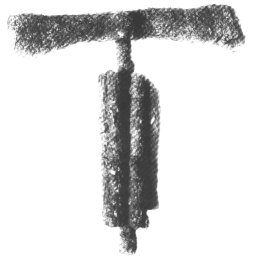 Etruscan Fasces
Etruscan Fasces
The Etruscan Facses has a great resemblance to the Phoenician/Minoan Labrys (double axe).
 Minoan Labrys and Bull
Minoan Labrys and Bull
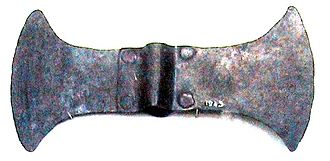 Minoan Labrys
Minoan Labrys
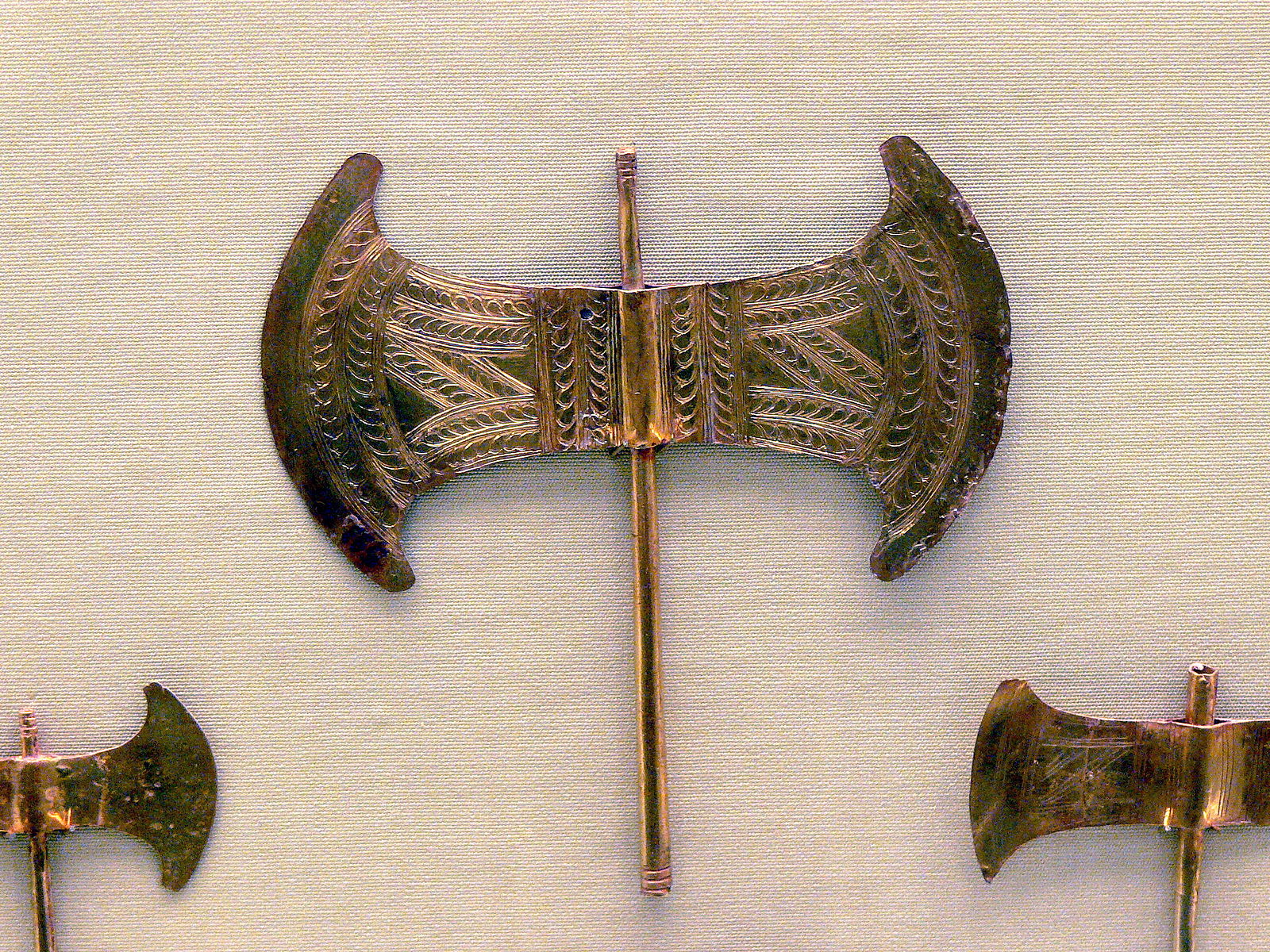 Minoan Labrys
Minoan Labrys
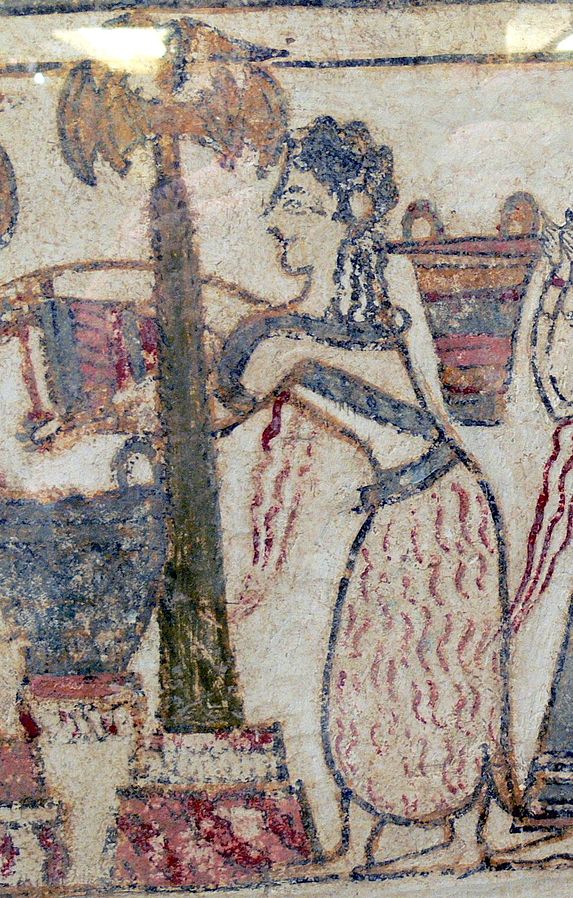 Priestess sacrificing a liquid at an altar adorned with double axes - She is followed by another woman and a lyre-player,
Archaeological Museum of Herakleion - Sarcophagus of Agia Triada 1600 - 1450 BC
Priestess sacrificing a liquid at an altar adorned with double axes - She is followed by another woman and a lyre-player,
Archaeological Museum of Herakleion - Sarcophagus of Agia Triada 1600 - 1450 BC
----
----
The Fasces symbolism was later adopted by Italy and Germany as well as the United States.
The symbolism of the Labrys can be followed from ancient Minoan Crete 1400 BC, to the Etruscans, and later to the Etruscan's descendants - the Romans, the Germans and Italians, and finally to the United States of America, their direct descendants.
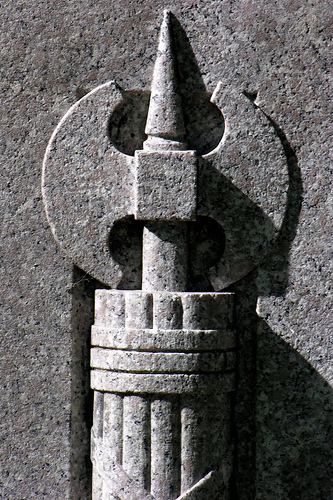 Roman Fasces
Roman Fasces
 Roman Fasces
Roman Fasces
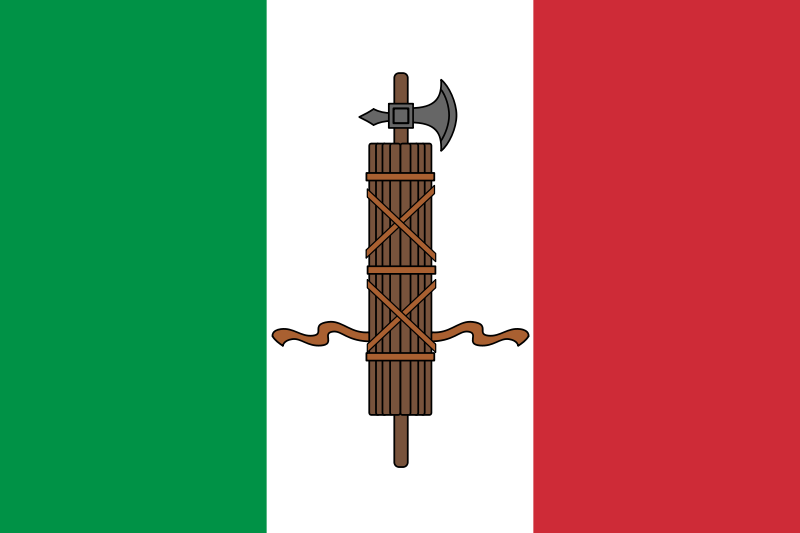 Italian Fasces
Italian Fasces
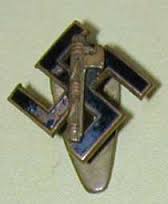 German Fasces
German Fasces
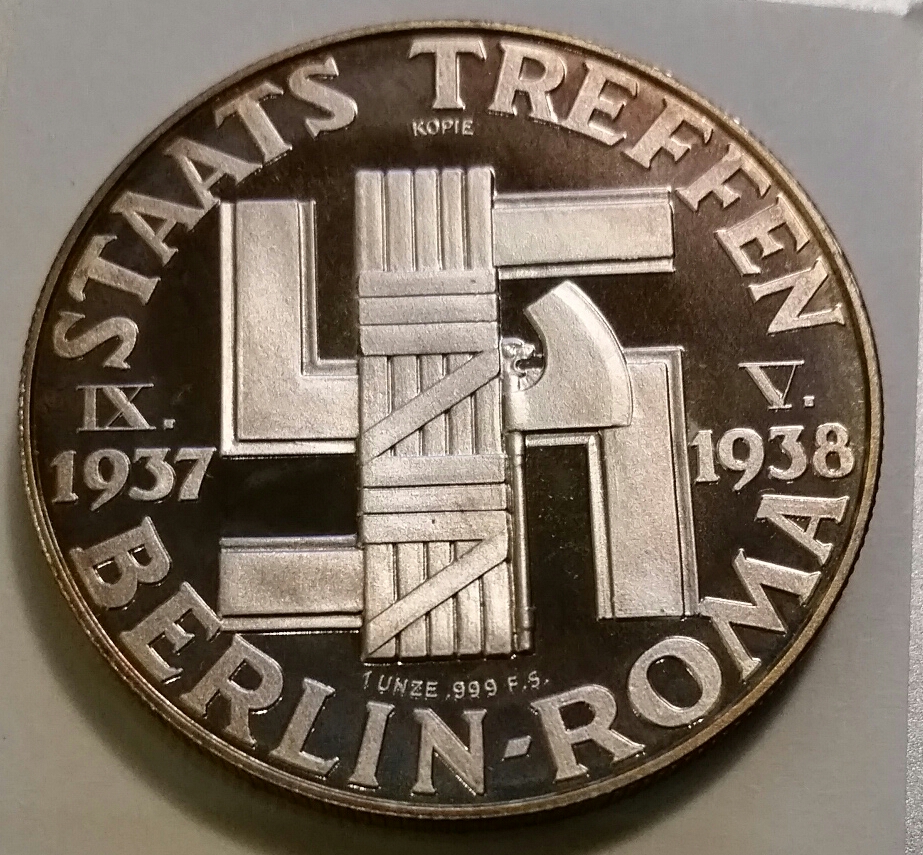 German Fasces
German Fasces
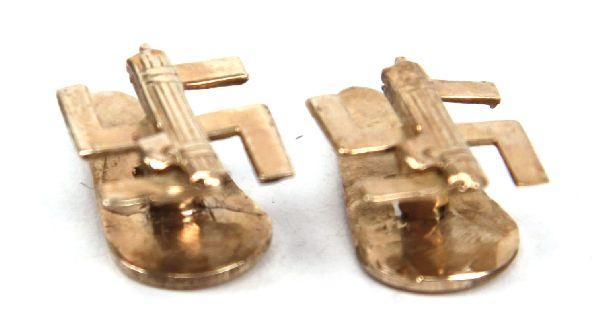 German Fasces
German Fasces
American Fasces
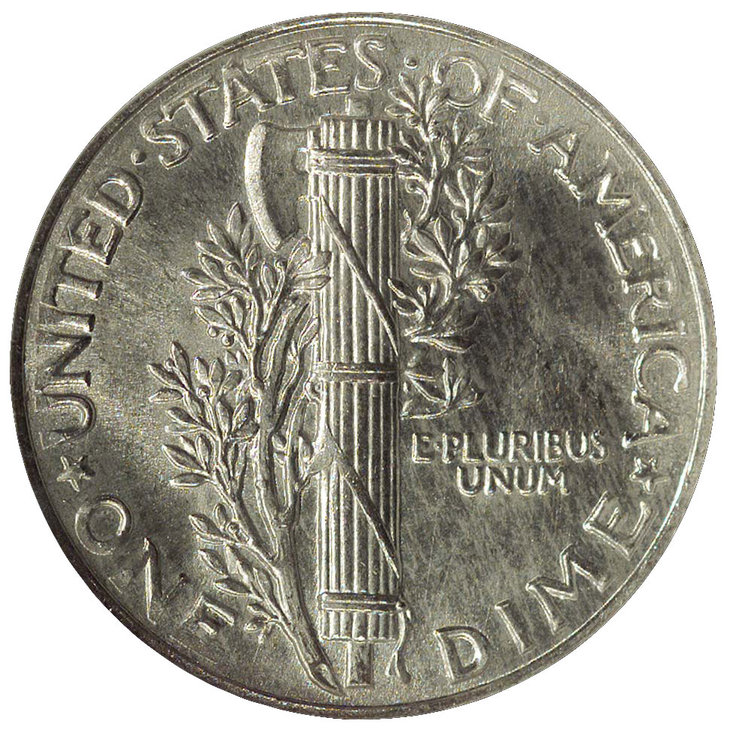 United States, Fasces on Mercury Dime
United States, Fasces on Mercury Dime
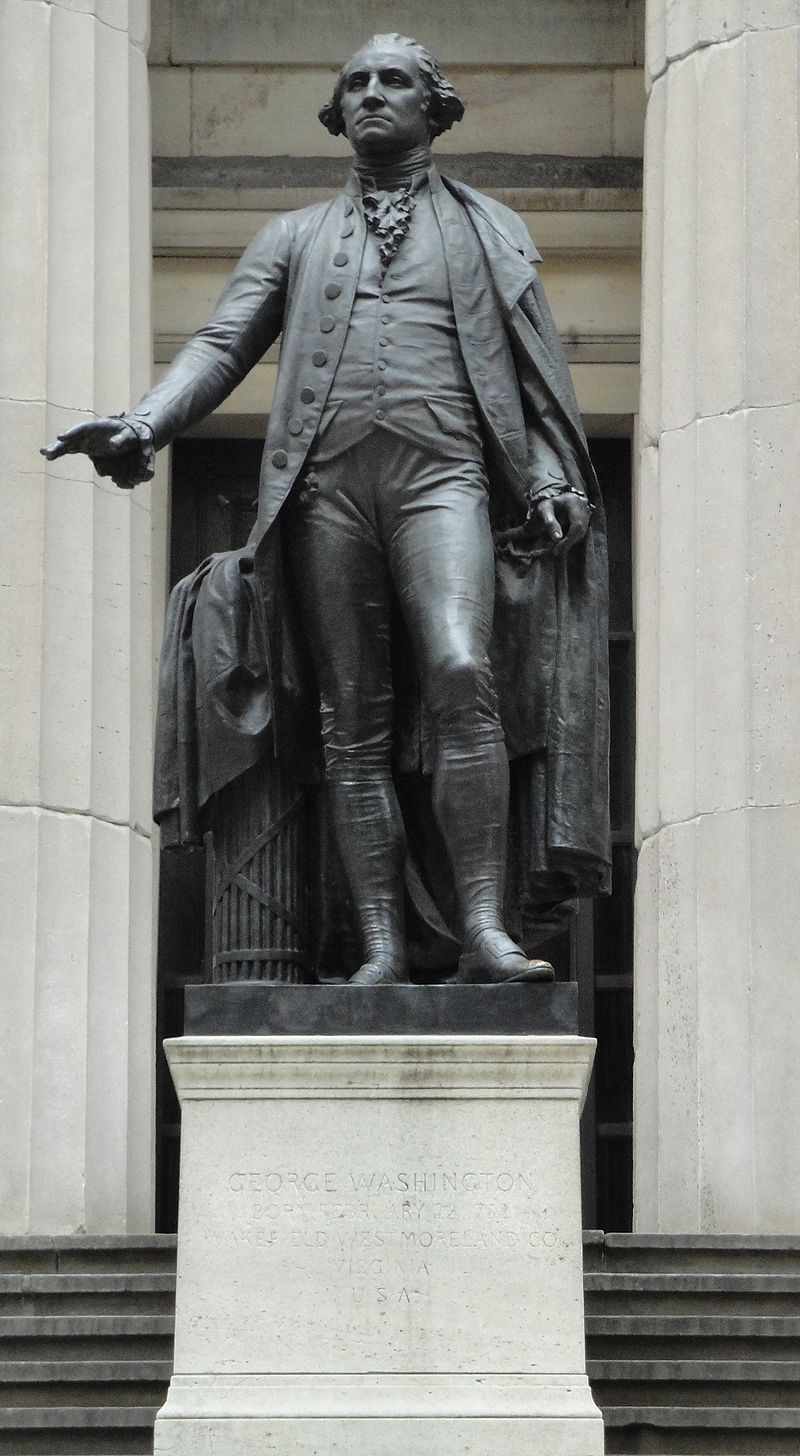 Fasces hidden under George Washington's Cloak, Federal Hall, United States
Fasces hidden under George Washington's Cloak, Federal Hall, United States
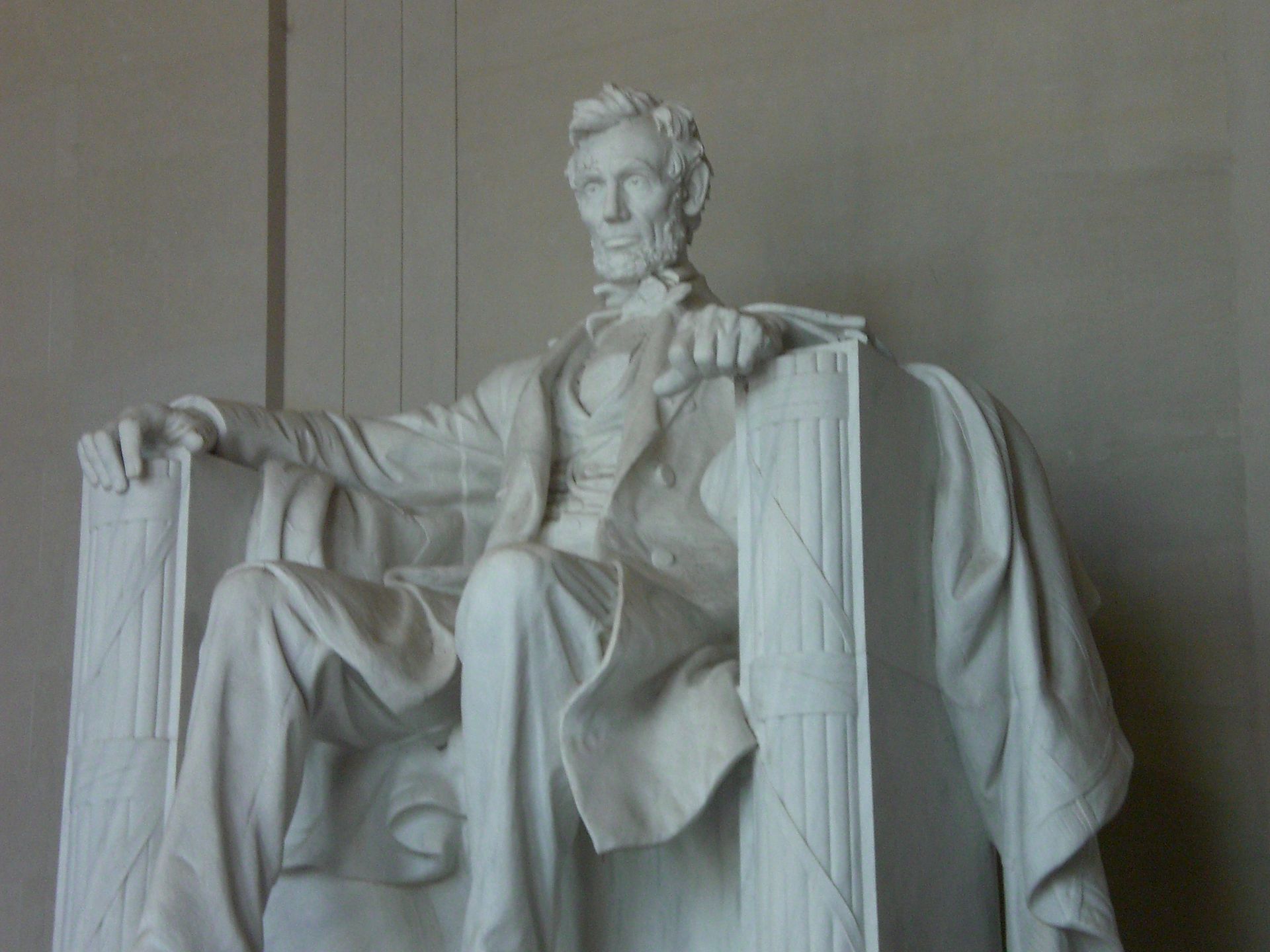 Fasces on Lincoln Memorial, United States
Fasces on Lincoln Memorial, United States
 Fasces in the US House Chamber, United States
Fasces in the US House Chamber, United States
----
Rome
At the height and toward the supposed 'end' of the Roman civilization, their territory comprised a large part of Europe, the British Isles, N. Africa, Asia Minor, the Middle East and the Mediterranean.

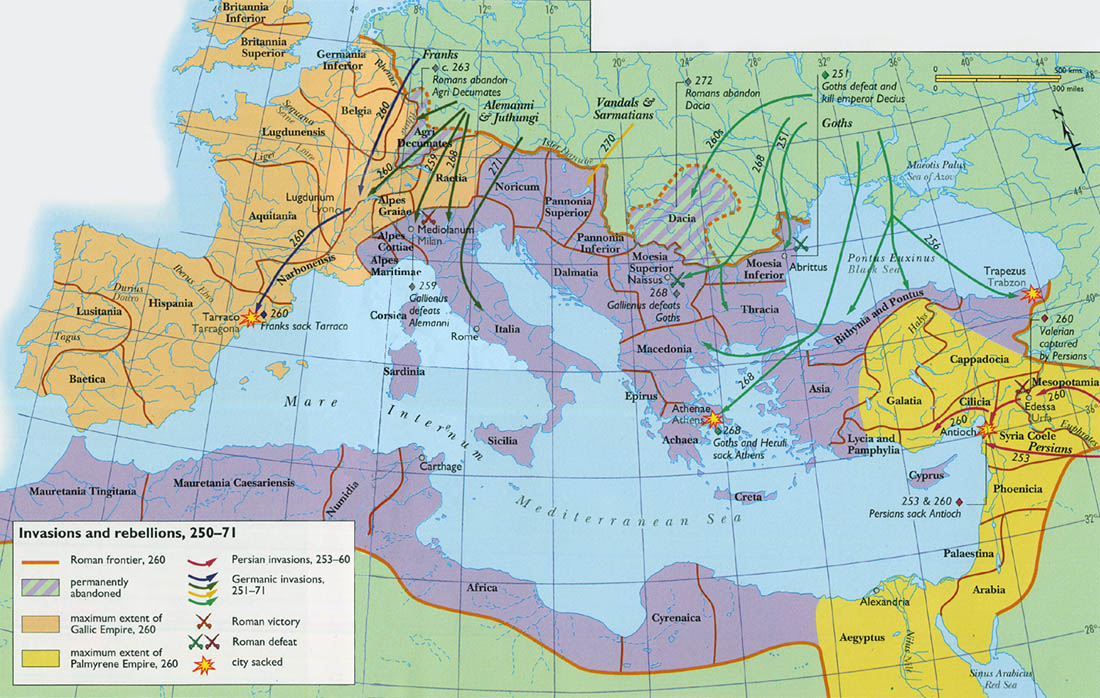
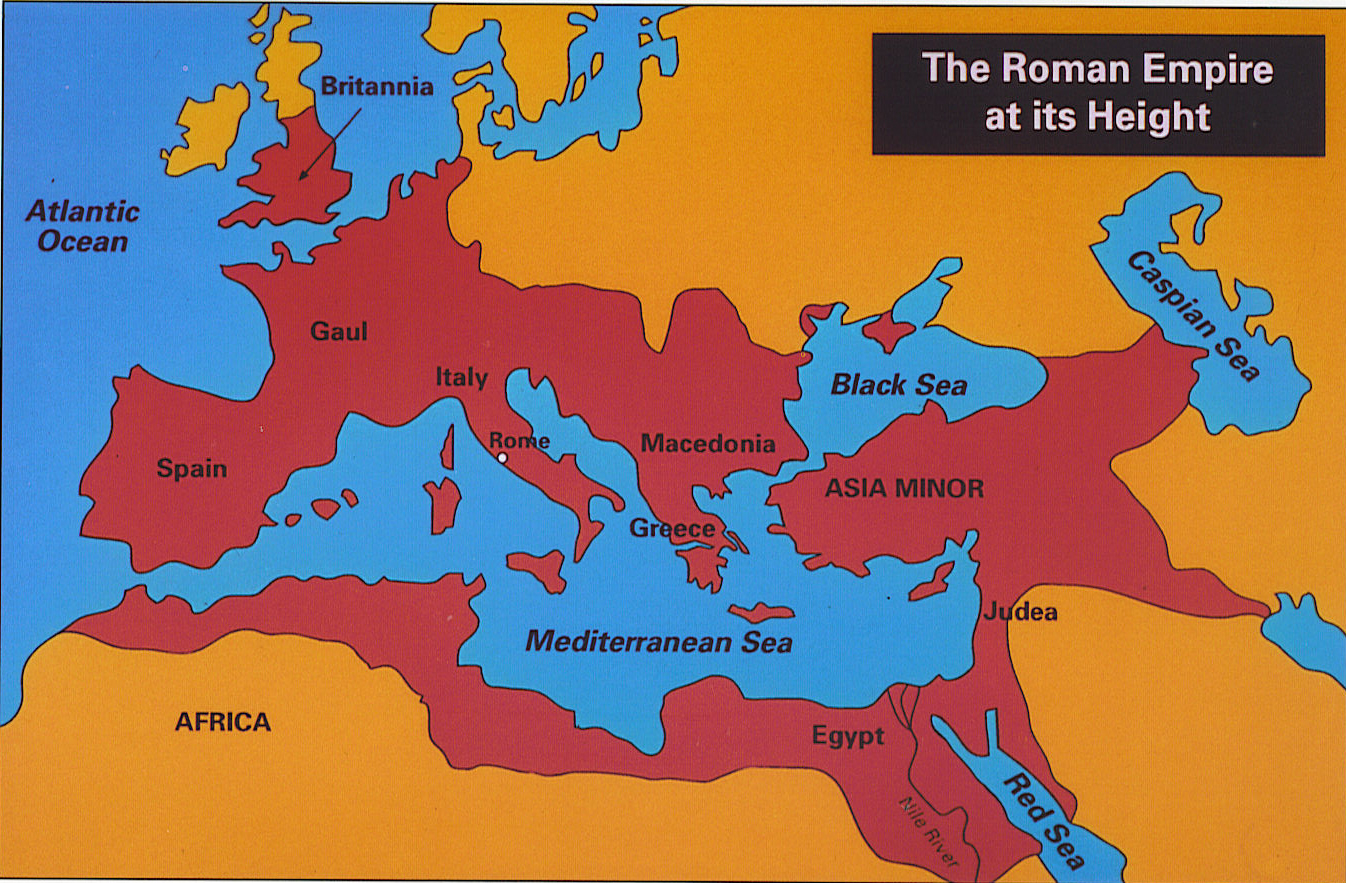
Was the entire power infrastructure dissolved at that point?
I highly doubt it..
----------------------------
But that is it for now.. I am out of steam.
So from the Phoenician-Mycenaean-Cretans, to the Etruscans, to Rome - including Europe and the British Isles, the power structure spread. A vast region of the world, united by a common history originating in the Levant and the Fertile Crescent. From these power structures likely developed many wealthy and influential individuals, groups, organizations, dynasties and lineages that continue to influence the world to this present day. They are international in scope, not belonging to any one nation, though they may pay homage to their origins.
The Phoenician-Cretan-Minoan Labrys (Double Axe) to the Facses
en.wikipedia.org...
Although little is known about the Etruscans, a few artifacts have been found showing a thin bundle of rods surrounding a two-headed axe. Fasces-symbolism might derive—via the Etruscans—from the eastern Mediterranean, with the labrys, the Anatolian and Minoan double-headed axe, later incorporated into the praetorial fasces.


The Etruscan Facses has a great resemblance to the Phoenician/Minoan Labrys (double axe).




----
"Minoan civilization reached its peak in the 2nd millennium BC"
- en.wikipedia.org...
"Some Minoan labrys have been found which are taller than a human and which might have been used during sacrifices. The sacrifices would likely have been of bulls. The bull and double-axe .."
en.wikipedia.org...
"On Greek vase paintings, a labrys sometimes appears in scenes of animal sacrifice, particularly as a weapon for the slaying of bulls."
----
"By the time of the Roman Republic, the fasces had evolved into a thicker bundle of birch rods, sometimes surrounding a single-headed axe and tied together with a red leather ribbon into a cylinder."
- en.wikipedia.org...
"The fasces had its origin in the Etruscan civilization, and was passed on to ancient Rome, where it symbolized a magistrate's power and jurisdiction"
The Fasces symbolism was later adopted by Italy and Germany as well as the United States.
The symbolism of the Labrys can be followed from ancient Minoan Crete 1400 BC, to the Etruscans, and later to the Etruscan's descendants - the Romans, the Germans and Italians, and finally to the United States of America, their direct descendants.






American Fasces




----
Rome
- en.wikipedia.org...
"The relationship between Rome and the Etruscans was not one of an outsider conquering a foreign people. The Etruscans considered Rome as one of their cities"
At the height and toward the supposed 'end' of the Roman civilization, their territory comprised a large part of Europe, the British Isles, N. Africa, Asia Minor, the Middle East and the Mediterranean.



Was the entire power infrastructure dissolved at that point?
I highly doubt it..
----------------------------
But that is it for now.. I am out of steam.
So from the Phoenician-Mycenaean-Cretans, to the Etruscans, to Rome - including Europe and the British Isles, the power structure spread. A vast region of the world, united by a common history originating in the Levant and the Fertile Crescent. From these power structures likely developed many wealthy and influential individuals, groups, organizations, dynasties and lineages that continue to influence the world to this present day. They are international in scope, not belonging to any one nation, though they may pay homage to their origins.
edit on 19-9-2015 by nOraKat because: (no reason given)
a reply to: nOraKat
In order to get people to do what you want them to, the people must be paid, one way or another.
Rich people can get others to do their will more often, and smart people know how to get some thing useful to happen.
Any class of people, working towards common interests, will be smarter more often than any individual.
Very interesting work and quite presentable.
Thanks a lot.
In order to get people to do what you want them to, the people must be paid, one way or another.
Rich people can get others to do their will more often, and smart people know how to get some thing useful to happen.
Any class of people, working towards common interests, will be smarter more often than any individual.
Very interesting work and quite presentable.
Thanks a lot.
dude...the coolest graphics and pictures here...so cool to see
answer...the evil sorry sap sucker black pope and the dad gum Jesuits....I battle them personally...my wife and I were in Houston nature trails in north Irving Texas....near up to the Cistercian school my brother-in-law mechaniced at....we saw three guys chanting and drumming with tambourines....then they shot our way without seeing us....it was just before I was going to holler something bad to them.....empty'd a 22 into the trees there...a public trail....1974...friggin Irving Texas...true story!!...come to think of it... a guy was shot and killed with one shot from a 22 at lascolinas country club....right near there....someone should research huh!! gives me an idea....they say he was shot just as he was wound up in the backswing....it penetrated through the ribs into his heart....and he fell dead immediately...
answer...the evil sorry sap sucker black pope and the dad gum Jesuits....I battle them personally...my wife and I were in Houston nature trails in north Irving Texas....near up to the Cistercian school my brother-in-law mechaniced at....we saw three guys chanting and drumming with tambourines....then they shot our way without seeing us....it was just before I was going to holler something bad to them.....empty'd a 22 into the trees there...a public trail....1974...friggin Irving Texas...true story!!...come to think of it... a guy was shot and killed with one shot from a 22 at lascolinas country club....right near there....someone should research huh!! gives me an idea....they say he was shot just as he was wound up in the backswing....it penetrated through the ribs into his heart....and he fell dead immediately...
edit on 19-9-2015 by GBP/JPY because: our new
King.....He comes right after a nicely done fake one
I just wanted to add some thoughts..
An interesting idea in all this is the idea of -
Who is Semitic or Hebrew?
Sumer, or the Sumerians supposedly were not Semitic since they did not originally speak a Semitic language, while the Akkadians did and are considered Semitic. The Canaanites/Phoenicians spoke a Semitic language, one close to Hebrew. The Sumerians in later eras eventually spoke Semitic, due to the Akkadians converting them.
With the Phoenician descendants joining or becoming - the Greeks/Minoans, the Roman/Italian, the British, German, Spanish, Portuguese peoples amongst other Phoenician descendent peoples, it is possible that most of the 'Western' world today is 'Semitic' in origin, whether you read the Torah or not. The original Semites did not even read the Torah since it did not exist.
So in the original usage of the words 'Semitic' and 'Hebrew' (Jew), in terms of the Language or the origin of a peoples, pretty much the entire western world (and then some) is Semitic and a 'Jew'/Hebrew, (at least in part) since they likely descended from the Phoenician/Akkadian/etc. Semitic/Hebrew people of the Fertile Crescent. ..but that is not how we use the word anymore.
An interesting idea in all this is the idea of -
Who is Semitic or Hebrew?
Sumer, or the Sumerians supposedly were not Semitic since they did not originally speak a Semitic language, while the Akkadians did and are considered Semitic. The Canaanites/Phoenicians spoke a Semitic language, one close to Hebrew. The Sumerians in later eras eventually spoke Semitic, due to the Akkadians converting them.
With the Phoenician descendants joining or becoming - the Greeks/Minoans, the Roman/Italian, the British, German, Spanish, Portuguese peoples amongst other Phoenician descendent peoples, it is possible that most of the 'Western' world today is 'Semitic' in origin, whether you read the Torah or not. The original Semites did not even read the Torah since it did not exist.
So in the original usage of the words 'Semitic' and 'Hebrew' (Jew), in terms of the Language or the origin of a peoples, pretty much the entire western world (and then some) is Semitic and a 'Jew'/Hebrew, (at least in part) since they likely descended from the Phoenician/Akkadian/etc. Semitic/Hebrew people of the Fertile Crescent. ..but that is not how we use the word anymore.
edit on 20-9-2015 by nOraKat because: (no reason
given)
Is your premise that secret societies and other hidden groups come from there ?
How does this fit in with the Me issues tody?
How does this fit in with the Me issues tody?
a reply to: onequestion
I don't know anything about what I cannot see.
But interestingly the symbolism and practice of secret societies come from that region/civilization (but then what does not in "Western" civilization).
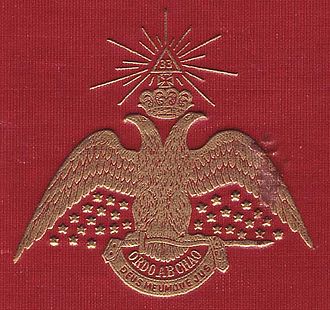 Double headed 'eagle' used by the Ancient and Accepted Scottish Rite of Freemasonry, from cover of Morals and Dogma
Double headed 'eagle' used by the Ancient and Accepted Scottish Rite of Freemasonry, from cover of Morals and Dogma
Amongst the earliest examples of the double headed 'eagle' symbolism comes from the city of Lagash of the Hittites -
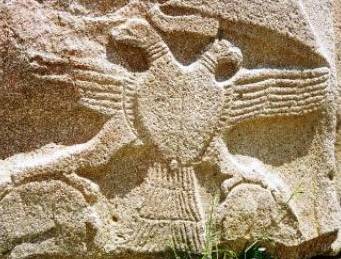
Double headed eagle of Lagash
en.wikipedia.org...
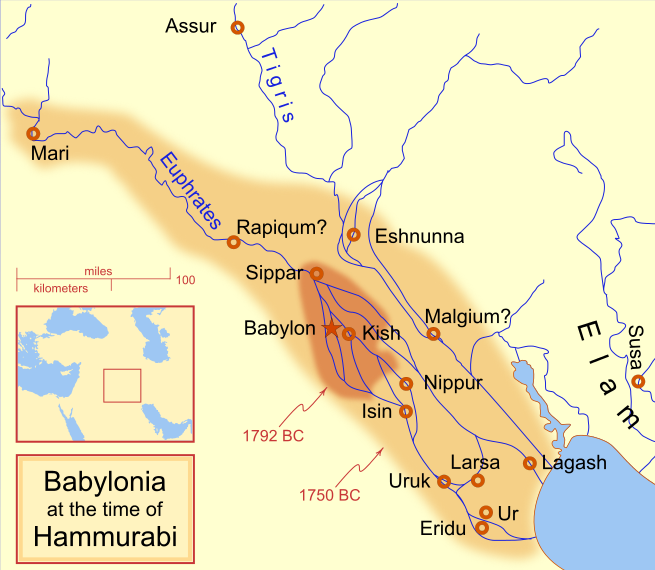 Location of Lagash
Location of Lagash
en.wikipedia.org...
I don't know if this eagle is Sumerian or Hittite, but generally the same region as the Akkadian/Assyrian Empires. Lagash is considered one of the oldest Sumerian cities, and then later taken over by the Akkadians. I really see that entire culture/civilization as an interrelated inter-marrying/breeding whole, probably originating with the Sumerian civilization.
It was later adopted by Russia, Europe (The Holy Roman Empire, Germany, United States, etc.).
----
The Masonic rituals of Hiram Abiff are also from the same region.
----
Maybe we give too much credit to secret societies than they deserve, as far as global influence goes; though they may be used as instruments to recruit people.
----
What is "Me" in your question - "How does this fit in with the Me issues today?"
originally posted by: onequestion
Is your premise that secret societies and other hidden groups come from there ?
How does this fit in with the Me issues today?
I don't know anything about what I cannot see.
But interestingly the symbolism and practice of secret societies come from that region/civilization (but then what does not in "Western" civilization).

Amongst the earliest examples of the double headed 'eagle' symbolism comes from the city of Lagash of the Hittites -

Double headed eagle of Lagash
en.wikipedia.org...

en.wikipedia.org...
I don't know if this eagle is Sumerian or Hittite, but generally the same region as the Akkadian/Assyrian Empires. Lagash is considered one of the oldest Sumerian cities, and then later taken over by the Akkadians. I really see that entire culture/civilization as an interrelated inter-marrying/breeding whole, probably originating with the Sumerian civilization.
It was later adopted by Russia, Europe (The Holy Roman Empire, Germany, United States, etc.).
----
The Masonic rituals of Hiram Abiff are also from the same region.
----
Maybe we give too much credit to secret societies than they deserve, as far as global influence goes; though they may be used as instruments to recruit people.
----
What is "Me" in your question - "How does this fit in with the Me issues today?"
edit on 27-9-2015 by nOraKat because: (no reason given)
a reply to: nOraKat
As the common tongue. Sumerian was still used as the religious tongue.
This would be the neo-Assyrian Empire, not the old or middle ones.
Completely false. A portion of currency was livestock, but in Mesopotamia and Egypt it was actually primarily beer. Case in point:
World's oldest paycheque cashed in beer
It is a complete myth that vikings wore horned helmets. I thought that was common knowledge.
Is he trying to imply that the Venetians were descended from Phoenicians..? They were a Gallic tribe on the coast of France.
He really needs to learn etymologies. Phonetic comes from Greek "phone", sound. Phoenicia comes from LATIN, punicus, and likely related to the word for Tyrian purple, phoiniks. Trying to connect these two words from different languages is a dirty trick.
No it didn't. I think you're confusing alphabet with language here. Western languages descend from indo-european sources. Not to mention that the Semitic peoples did not even use vowels, so the entire western alphabet literally could not have descended from it.
No they did not. It is absurd to claim that the Phoenicians in 1200BC could have the most advanced ships with sails in the world while the vikings did not have sails until the viking age, despite mainland European nations having them for centuries.
Hebrew never meant "Jew", particularly as Judaism had not been established during the Hebrew era. The very word "Jew" comes from Judah, a specific tribe within the overarching group known as the Hebrews. "Hebrew" supposedly comes from the ancestor Eber.
You think that the Hittite double-headed eagle at the Sphinx Gate is located over 2000 kilometres southeast. It is not in Mesopotamia, it is in modern day Turkey.
I have extremely limited knowledge on the Minoans and Etruscans so I will refrain from commenting therein.
I like what you are trying to do, but you are spreading falsehoods. You need to factcheck this author's claims before touting them as actual history. There are some interesting connections, but far too many errors.
Akkadian gradually replaced Sumerian as a spoken language somewhere between the 3rd and the 2nd millennia BC..
As the common tongue. Sumerian was still used as the religious tongue.
Assyrian Empire 650 BC
This would be the neo-Assyrian Empire, not the old or middle ones.
Up until 1500 B.C. all money was cattle, lambs, goats, or pigs
Completely false. A portion of currency was livestock, but in Mesopotamia and Egypt it was actually primarily beer. Case in point:
World's oldest paycheque cashed in beer
It is a complete myth that vikings wore horned helmets. I thought that was common knowledge.
The merchant bankers of Venice came to underwrite the Venetians' (the Phoenicians') voyaging ventures. Such international trade financing swiftlybecame the big thing in the banking game."
Is he trying to imply that the Venetians were descended from Phoenicians..? They were a Gallic tribe on the coast of France.
the Phoenicians invented phonetic spelling—Phoenician spelling—
He really needs to learn etymologies. Phonetic comes from Greek "phone", sound. Phoenicia comes from LATIN, punicus, and likely related to the word for Tyrian purple, phoiniks. Trying to connect these two words from different languages is a dirty trick.
Note that the entire Western language descended from the 'Semitic' Phoenician, through Etruscan and Latin.
No it didn't. I think you're confusing alphabet with language here. Western languages descend from indo-european sources. Not to mention that the Semitic peoples did not even use vowels, so the entire western alphabet literally could not have descended from it.
In their western Mediterranean and Atlantic venturings the Phoenicians became the Veekings.
No they did not. It is absurd to claim that the Phoenicians in 1200BC could have the most advanced ships with sails in the world while the vikings did not have sails until the viking age, despite mainland European nations having them for centuries.
So in the original usage of the words 'Semitic' and 'Hebrew' (Jew)
Hebrew never meant "Jew", particularly as Judaism had not been established during the Hebrew era. The very word "Jew" comes from Judah, a specific tribe within the overarching group known as the Hebrews. "Hebrew" supposedly comes from the ancestor Eber.
Double headed eagle of Lagash
Location of Lagash
You think that the Hittite double-headed eagle at the Sphinx Gate is located over 2000 kilometres southeast. It is not in Mesopotamia, it is in modern day Turkey.
I have extremely limited knowledge on the Minoans and Etruscans so I will refrain from commenting therein.
I like what you are trying to do, but you are spreading falsehoods. You need to factcheck this author's claims before touting them as actual history. There are some interesting connections, but far too many errors.
a reply to: SargonThrall
That would make sense if it was Hittite right, because the Hittites were in Turkey. To be honest I've never seen the original in the context of it's surroundings so I am not certain where it is.
I found this one article who calls it the "Double Headed Eagle of Lagash" -
..and then they show that same image I posted. Maybe there are two or more ancient depictions? I don't know.
Either way that fact is not that important to the story.
-----
Well if they did trade livestock the statement couldn't be completely false, right? I'm sure they traded all manner of things. The point of the narrative was to illustrate - leading up to the point of the Phoenician/viking traders to start using iron bull horn shaped objects for money.
-----
I am not an archeologist and cannot say, but they have found horned helmets from antiquity, 1100 BCE (Veksø, Denmark). There must be a reason Bucky believed in that. Again not that important to the main points.
-----
This on the other hand is an important point - Yes he is.
Venice is listed on this list of Phoenician cities: List of Phoenician cities It seems like this is fairly known.
In regard to following the Phoenicians lineage, we can deduce from observing what happens in the United States that genetically, people are cross breeding all over the place. I think the important aspect of the story is from the perspective of a power structure and how it developed. Phoenicians are an inter-breeding culture that change over time.
-----
I can't speak for him. The point was that - "All written language of the 'western world' developed from Phoenician."
-----
I won't argue with you, but I did illustrate that there is a continuous unbroken culture that spans from the ancient Phoenicians, to the Etruscans, to the Romans, and to the present day western world. I would imagine the language is also somehow connected, or have developed from each other.
-----
I wonder who they are identifying as vikings? I won't argue with you there.
-----
I know Wikipedia is not necessarily the authority on this but right from their article on Jews -
I won't argue with you there but maybe you are nit-picking a little.
The main point I was trying to illustrate was the continuity of this empire building culture, which again is not a pure genetic lineage and is ever-changing.
One glaring mistake is that you think that the Hittite double-headed eagle at the Sphinx Gate is located over 2000 kilometres southeast. It is not in Mesopotamia, it is in modern day Turkey.
That would make sense if it was Hittite right, because the Hittites were in Turkey. To be honest I've never seen the original in the context of it's surroundings so I am not certain where it is.
I found this one article who calls it the "Double Headed Eagle of Lagash" -
- Eagle of Lagash
The Masonic eagle is often referred to as the “Eagle of Lagash,” after one of the oldest uses of the emblem, in the ancient Sumerian city of Lagash. The two faced eagle was popularized in Europe by the Emperor Charlemagne, and the symbol was adopted formally into Freemasonry in the mid-eighteenth century, by the Council of Emperors of the East and West.
..and then they show that same image I posted. Maybe there are two or more ancient depictions? I don't know.
Either way that fact is not that important to the story.
-----
Completely false. A portion of currency was livestock, but in Mesopotamia and Egypt it was actually primarily beer. Case in point: ..
Well if they did trade livestock the statement couldn't be completely false, right? I'm sure they traded all manner of things. The point of the narrative was to illustrate - leading up to the point of the Phoenician/viking traders to start using iron bull horn shaped objects for money.
-----
It is a complete myth that vikings wore horned helmets.
I am not an archeologist and cannot say, but they have found horned helmets from antiquity, 1100 BCE (Veksø, Denmark). There must be a reason Bucky believed in that. Again not that important to the main points.
-----
Is he trying to imply that the Venetians were descended from Phoenicians..?
This on the other hand is an important point - Yes he is.
Venice is listed on this list of Phoenician cities: List of Phoenician cities It seems like this is fairly known.
In regard to following the Phoenicians lineage, we can deduce from observing what happens in the United States that genetically, people are cross breeding all over the place. I think the important aspect of the story is from the perspective of a power structure and how it developed. Phoenicians are an inter-breeding culture that change over time.
-----
Trying to connect these two words from different languages is a dirty trick.
I can't speak for him. The point was that - "All written language of the 'western world' developed from Phoenician."
-----
No it didn't. I think you're confusing alphabet with language here. Western languages descend from indo-european sources.
I won't argue with you, but I did illustrate that there is a continuous unbroken culture that spans from the ancient Phoenicians, to the Etruscans, to the Romans, and to the present day western world. I would imagine the language is also somehow connected, or have developed from each other.
-----
the vikings did not have sails until the viking age,
I wonder who they are identifying as vikings? I won't argue with you there.
-----
Hebrew never meant "Jew"
I know Wikipedia is not necessarily the authority on this but right from their article on Jews -
- Who is a Jew?
The Jews, also known as the Jewish people, are an ethnoreligious group originating from the Israelites, or Hebrews..
- Hebrews
Hebrews is a term appearing 34 times within 32 verses of the Hebrew Bible. While the term was not an ethnonym, it is mostly taken as synonymous with the Semitic-speaking Israelites..
- Hebrew
Hebrew is a member of the Canaanite group of Semitic languages. It was the language of the early Jews..
I won't argue with you there but maybe you are nit-picking a little.
The main point I was trying to illustrate was the continuity of this empire building culture, which again is not a pure genetic lineage and is ever-changing.
edit on 6-9-2016 by nOraKat because: (no reason given)
edit on 6-9-2016 by nOraKat because: (no reason
given)
originally posted by: nOraKat
I've never seen the original in the context of it's surroundings so I am not certain where it is.
And I have. A simple search would have shown you that it is located at the Sphinx Gate, Alaka Huyuk.
Well if they did trade livestock the statement couldn't be completely false, right? I'm sure they traded all manner of things. The point of the narrative was to illustrate - leading up to the point of the Phoenician/viking traders to start using iron bull horn shaped objects for money.
Your author said that all money was livestock, so yes it is completely false. Please show me one single example of viking horn shaped trading objects. Just one. Because they didn't. They used hack silver.
I am not an archeologist and cannot say, but they have found horned helmets from antiquity, 1100 BCE (Veksø, Denmark). There must be a reason Bucky believed in that. Again not that important to the main points.
And I was. There have only been two wiry horned hats which look nothing like bull horns. They were purely ceremonial, and were not suitable for warfare whatsoever, and more importantly were NOT even close to the viking age. A full 2000 years before it. I think you are in denial if you are using that as an example to illustrate connection.
The Jews, also known as the Jewish people, are an ethnoreligious group originating from the Israelites, or Hebrews.. - Who is a Jew?
My point there is that "Jew" solely referred to the tribe of Judah until the rest of the tribes submitted to King Solomon. Afterwards the entire nation adopted the name.
It is absolutely not nitpicking to point out inaccuracies when your thesis (or the original author's) depends on them. If basic points are incorrect then it can't be assumed that the larger issues are correct.
Its so weird.. I look at this post after many years and some of my replies have mysteriously disappeared.
Anyway some related links:
Symbolism of TPTB - On the Development of World Power Structures - Part 2
THE Bank of all Banks
Anyway some related links:
Symbolism of TPTB - On the Development of World Power Structures - Part 2
THE Bank of all Banks
new topics
-
Any one suspicious of fever promotions events, major investor Goldman Sachs card only.
The Gray Area: 1 hours ago -
God's Righteousness is Greater than Our Wrath
Religion, Faith, And Theology: 5 hours ago -
Electrical tricks for saving money
Education and Media: 8 hours ago -
VP's Secret Service agent brawls with other agents at Andrews
Mainstream News: 10 hours ago -
Sunak spinning the sickness figures
Other Current Events: 10 hours ago -
Nearly 70% Of Americans Want Talks To End War In Ukraine
Political Issues: 10 hours ago
top topics
-
VP's Secret Service agent brawls with other agents at Andrews
Mainstream News: 10 hours ago, 9 flags -
Cats Used as Live Bait to Train Ferocious Pitbulls in Illegal NYC Dogfighting
Social Issues and Civil Unrest: 14 hours ago, 8 flags -
Electrical tricks for saving money
Education and Media: 8 hours ago, 4 flags -
Nearly 70% Of Americans Want Talks To End War In Ukraine
Political Issues: 10 hours ago, 3 flags -
Sunak spinning the sickness figures
Other Current Events: 10 hours ago, 3 flags -
Late Night with the Devil - a really good unusual modern horror film.
Movies: 12 hours ago, 2 flags -
The Good News According to Jesus - Episode 1
Religion, Faith, And Theology: 16 hours ago, 1 flags -
Any one suspicious of fever promotions events, major investor Goldman Sachs card only.
The Gray Area: 1 hours ago, 1 flags -
God's Righteousness is Greater than Our Wrath
Religion, Faith, And Theology: 5 hours ago, 0 flags
active topics
-
God's Righteousness is Greater than Our Wrath
Religion, Faith, And Theology • 9 • : andy06shake -
-@TH3WH17ERABB17- -Q- ---TIME TO SHOW THE WORLD--- -Part- --44--
Dissecting Disinformation • 661 • : Justoneman -
SETI chief says US has no evidence for alien technology. 'And we never have'
Aliens and UFOs • 59 • : andy06shake -
HORRIBLE !! Russian Soldier Drinking Own Urine To Survive In Battle
World War Three • 36 • : TheMisguidedAngel -
British TV Presenter Refuses To Use Guest's Preferred Pronouns
Education and Media • 146 • : Consvoli -
Nearly 70% Of Americans Want Talks To End War In Ukraine
Political Issues • 19 • : Consvoli -
Terrifying Encounters With The Black Eyed Kids
Paranormal Studies • 76 • : Consvoli -
Samuel Aun Woer
Religion, Faith, And Theology • 27 • : helebi20 -
Any one suspicious of fever promotions events, major investor Goldman Sachs card only.
The Gray Area • 2 • : Cavemannick -
VP's Secret Service agent brawls with other agents at Andrews
Mainstream News • 42 • : 38181
29
